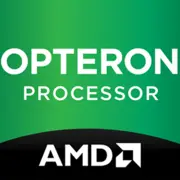Advantages
- Larger L3 Cache: 8MB shared (8MB shared vs N/A)
- Higher Technology: 14 nm (14 nm vs 28 nm)
- Higher Memory Type: DDR4-3200 (DDR4-3200 vs DDR3)
- Newer Launch Date: September 2021 (September 2021 vs May 2013)
Basic
Intel
Label Name
AMD
September 2021
Launch Date
May 2013
Server
Platform
Server
Xeon E-2314
Model Name
?
The Intel processor number is just one of several factors - along with processor brand, system configurations, and system-level benchmarks - to be considered when choosing the right processor for your computing needs.
Opteron X2150
Rocket Lake-E
Code Name
Kyoto
Intel
Foundry
-
Xeon (Rocket Lake-E)
Generation
Opteron (X-Series)
CPU Specifications
4
Total Cores
?
Cores is a hardware term that describes the number of independent central processing units in a single computing component (die or chip).
4
4
Total Threads
?
Where applicable, Intel® Hyper-Threading Technology is only available on Performance-cores.
4
2.8 GHz
Performance-core Base Frequency
1.9 GHz
4.5 GHz
Performance-core Max Turbo Frequency
?
Maximum P-core turbo frequency derived from Intel® Turbo Boost Technology.
-
80K per core
L1 Cache
64K per core
512K per core
L2 Cache
2MB shared
8MB shared
L3 Cache
N/A
Intel Socket 1200
CPU Socket
?
The socket is the component that provides the mechanical and electrical connections between the processor and motherboard.
AMD Socket FT3
No
Unlocked Multiplier
No
28.0
Multiplier
19.0
100MHz
Bus Frequency
100MHz
14 nm
Technology
?
Lithography refers to the semiconductor technology used to manufacture an integrated circuit, and is reported in nanometer (nm), indicative of the size of features built on the semiconductor.
28 nm
65 W
TDP
22 W
4
PCIe Version
?
PCI Express is a high-speed serial computer expansion bus standard used for connecting high-speed components, replacing older standards such as AGP, PCI, and PCI-X. It has gone through multiple revisions and improvements since its initial release. PCIe 1.0 was first introduced in 2002, and in order to meet the growing demand for higher bandwidth, subsequent versions have been released over time.
-
Memory Specifications
DDR4-3200
Memory Type
?
Intel® processors come in four different types: Single Channel, Dual Channel, Triple Channel, and Flex Mode. Maximum supported memory speed may be lower when populating multiple DIMMs per channel on products that support multiple memory channels.
DDR3
2
Memory Channels
?
The number of memory channels refers to the bandwidth operation for real world application.
-
Yes
ECC Memory Support
No
GPU Specifications
N/A
Integrated Graphics Model
?
An integrated GPU refers to the graphics core that is integrated into the CPU processor. Leveraging the processor's powerful computational capabilities and intelligent power efficiency management, it delivers outstanding graphics performance and a smooth application experience at a lower power consumption.
HD 8400
Miscellaneous
20
PCIe Lanes
-
Benchmarks
Geekbench 6 Single Core
Xeon E-2314
2077
+1101%
Opteron X2150
173
Geekbench 6 Multi Core
Xeon E-2314
4782
+784%
Opteron X2150
541
Geekbench 5 Single Core
Xeon E-2314
1231
+595%
Opteron X2150
177
Geekbench 5 Multi Core
Xeon E-2314
3579
+488%
Opteron X2150
609
Share in social media
Or Link To Us
<a href="https://cputronic.com/cpu/compare/intel-xeon-e-2314-vs-amd-opteron-x2150" target="_blank">Intel Xeon E-2314 vs AMD Opteron X2150</a>

